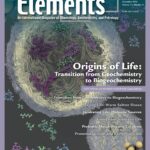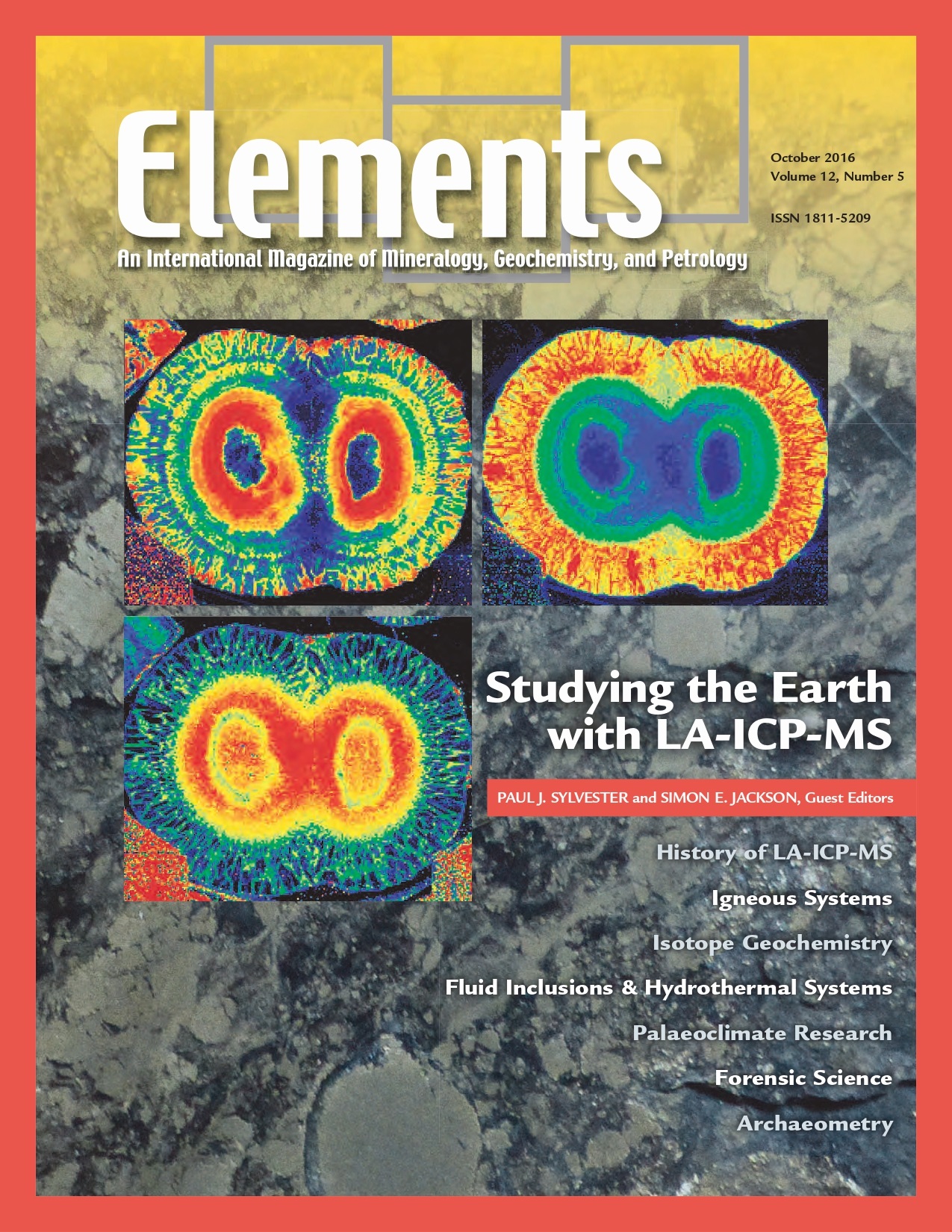
Geomicrobiology And Microbial Geochemistry, December 2015, Vol. 11, No. 6
June 28, 2024
Origins Of Life: Transition From Geochemistry To Biogeochemistry, December 2016, Vol. 12, No. 6
June 28, 2024Studying The Earth Using La-ICPMS, October 2016, Vol. 12, No. 5
$20.00
Laser ablation – inductively coupled plasma mass spectrometry (LA-ICPMS) is a mature, but still developing, micro-analytical technique that has allowed significant research advances in many areas of the Earth sciences. The method produces quantitative elemental and isotopic analyses on the micrometer scale of most solid, and some liquid, materials across most of the periodic table.
Studying The Earth Using La-ICPMS
October 2016, Vol. 12, No. 5
Laser ablation – inductively coupled plasma mass spectrometry (LA-ICPMS) is a mature, but still developing, micro-analytical technique that has allowed significant research advances in many areas of the Earth sciences. The method produces quantitative elemental and isotopic analyses on the micrometer scale of most solid, and some liquid, materials across most of the periodic table. A key strength of the method is that it can detect changing conditions or processes over time by analysis of growth zones or domains in minerals and other objects. Recent developments in rapid-wash out ablation cells and data handling software permit elemental and isotopic mapping of materials. Because both inorganic and organic materials can be analyzed, abiotic and biotic processes, and their interactions, can be studied. This issue of Elements highlights applications of LA-ICPMS across the broad range of disciplines of interest to the Earth, environmental, and biological sciences that now rely on the technique and their interdisciplinary nature.
Why You’ll Love Elements Magazine:
- Expert Contributors: Articles written by renowned researchers in the field of geoscience.
- Engaging Content: Join a community of readers who are passionate about Elements.
- Exceptional Quality: Each issue is printed on high-quality paper with stunning visuals and detailed illustrations that bring complex scientific concepts to life.
Order your copy of the October 2016 issue of Elements magazine today and study the Earth using LA-ICPMS.
Related products
-
Supervolcanoes, February 2008, Vol. 4, No. 1
$20.00Explosive super-eruptions from large volume, shallow magma systems lead to enormous and devastating pyroclastic flows, the formation of gigantic collapse calderas, and deposition of volcanic ash over continent-sized areas. Recognition that future eruptions from these “supervolcanoes” will undoubtedly have severe impacts on society—and perhaps on life itself—has led to recent public and media interest.
-
Glasses And Melts: Linking Geochemistry And Materials Science, October 2006, Vol. 2, No. 5
$20.00Geological interest in studying melts stems from early recognition that melts play a fundamental role in determining the physical and chemical behaviour of magmas and magmatic processes. However, due to the inherent difficulties associated with working at high temperatures, much of the geological research over the last 30 years has used quenched melts or glasses as proxies for melts themselves.
-
Carbon Dioxide Sequestration, October 2008, Vol. 4, No. 5
$20.00Storage of carbon in the subsurface involves introduction of supercritical CO2 into rock formations beneath the surface of the Earth, typically at depths of 1000 to 4000 meters. Although CO2 is a relatively benign substance, the volume being considered is large.




